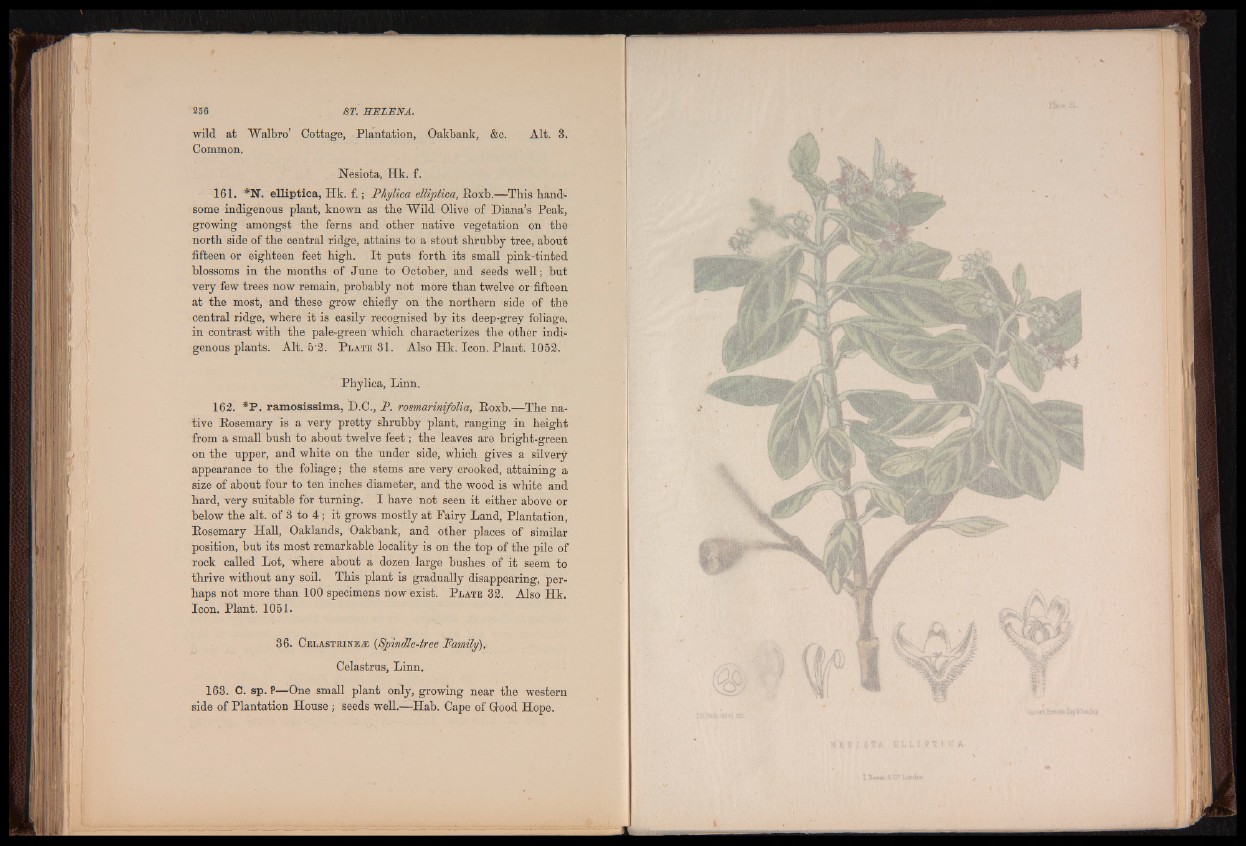
wild at Walbro’ Cottage, Plantation, Oakbank, &c. Alt. 3.
Common.
Nesiota, Hk. f.
161. *11. elliptica, Hk. f . ; Phylica elliptica, Eoxb.—This handsome
indigenous plant, known as the Wild Olive of Diana’s Peak,
growing amongst the ferns and other native vegetation on the
north side of the central ridge, attains to a stout shrubby tree, about
fifteen or eighteen feet high. I t puts forth its small pink-tinted
blossoms in the months of June to October, and seeds well; but
very few trees now remain, probably not more than twelve or fifteen
at the most, and these grow chiefly on the northern side of the
central ridge, where it is easily recognised by its deep-grey foliage,
in contrast with the pale-green which characterizes the other indigenous
plants. Alt. 5'2. P l a t e 31. Also Hk. Icon. Plant. 1052.
Phylica, Linn.
162. *P. ramosissima, D.C., P. rosmarinifolia, Eoxb.—The native
Eosemary is a very pretty shrubby plant, ranging in height
from a small bush to about twelve fe et; the leaves are bright-green
on the upper, and white on the under side, which gives a silvery
appearance to the foliage; the stems are very crooked, attaining a
size of about four to ten inches diameter, and the wood is white and
hard, very suitable for turning. I have not seen it either above or
below the alt. of 3 to 4 ; it grows mostly at Pairy Land, Plantation,
Eosemary Hall, Oaklands, Oakbank, and other places of similar
position, but its most remarkable locality is on the top of the pile of
rock called Lot, where about a dozen large bushes of it seem to
thrive without any soil. This plant is gradually disappearing, perhaps
not more than 100 specimens now exist. P l a t e 32. Also Hk.
Icon. Plant. 1051.
36. C e l a s t r i n e ® (SpincUe-tree Family).
Celastrus, Linn.
163. C. sp. P—One small plant only, growing near the western
side of Plantation House ; seeds well.—Hab. Cape of Good Hope.